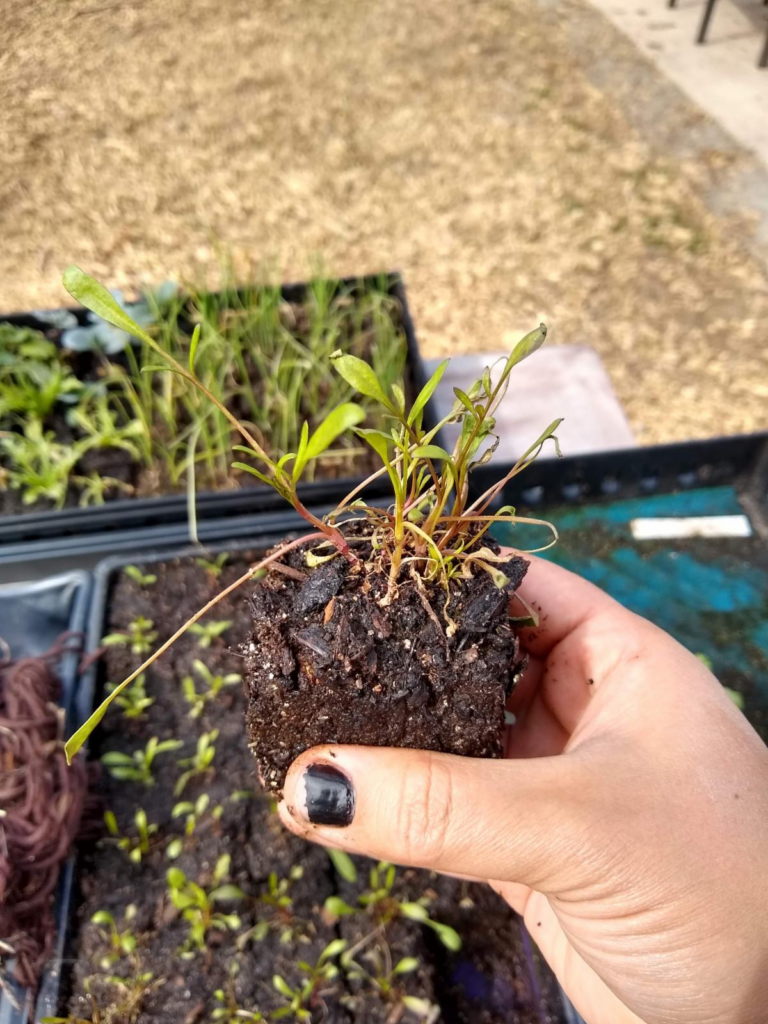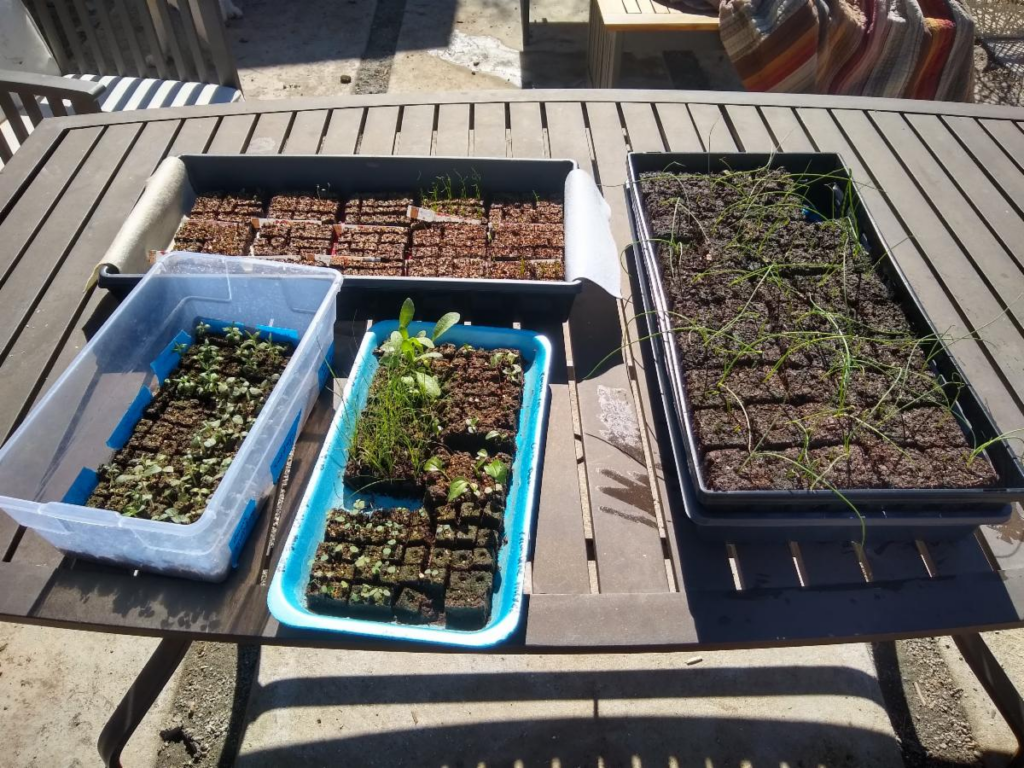By Alex Bruce
Looking for a new way to start seeds without having to use plastic pots that only last a few seasons? Soil blocking may be the best alternative you’ve never heard of. The concept is simple – using a mold, compress soil into durable blocks that are the perfect home for starting seeds.

This past year I invested in a soil block maker to start a variety of flower, vegetable, grass, and herb seeds. The seedlings performed amazingly well, and now I am on a mission to promote this relatively unknown method of starting seeds! The main benefit is a huge reduction in plastic – no pots required, and the tray can be something as simple as a thrifted cookie sheet pan or a clean foam tray recycled from grocery store meat. Other benefits are super healthy seedlings that do not get root bound, an easy system to bump up seedlings, a small footprint, and the fastest seedling transplanting you’ve ever experienced.

The most common concern I get from gardeners is that they think the blocks will fall apart. After starting thousands of seeds in blocks this past year, I can confidently say that they won’t! The blocks are very strong, and as long as they don’t get to a “bone dry” state, they hold together. I am careful with initial watering, as a direct hit from the watering could damage the block. As the seedling grows, their roots will help hold the block’s structure.

The trickiest part of soil blocking is finding the right soil mix. There are many different recipes out there, but I’ve had good luck following Elliot Coleman’s recipe (slightly modified as noted below).
Elliot Coleman’s Soil Block Recipe from the New Organic Grower
- 30 quarts brown peat (standard peat moss)
- ½ cup lime
- 20 quarts coarse sand or perlite
- 3 cups base fertilizer (equal parts blood meal, colloidal phosphate, and green sand)
- 10 quarts garden soil
- 20 quarts well‐decomposed compost
- Mix all ingredients together thoroughly
The fertilizer components and lime can be sourced at many garden centers (although I could only find green sand at Harlequin’s Garden) or ordered online. Another recipe that people have found works well is one by Lisa Mason Ziegler here. Others find that ProMix potting soil or Vermont Compost also work well by themselves. I did not fertilize my seedlings besides the initial soil mix, and they were far healthier than past seedlings I started in peat plugs or solo cups.
Now is a great time to start native seeds that need a long period of cold temperatures (stratification) to germinate well. Milkweed, coneflower, sulfur flower, penstemon and many others benefit from one or two months of cold stratification, which can be easily accomplished by sowing the seeds in soil blocks, covering with something to keep the humidity high, and placing outside for a few months. You will need to check the blocks every few days to make sure they don’t dry out, but as temperatures warm you will be amazed at the seedlings magically popping out of their blocks. Winter sowing of seeds is a low stress and economical way to start lots of plants and can be accomplished through traditional seed starting methods as well.
I hope you feel inspired to try soil blocking to grow native plants for your and your neighbor’s gardens! For more information, check out:
- The New Organic Grower by Elliot Coleman
- Elliot Coleman’s article for Johnny’s Seeds – https://www.johnnyseeds.com/growers-library/methods-tools-supplies/seed-starting-transplanting/soil-block-makers-eliot-coleman.html
- “You Can’t Eat the Grass” Youtube channel – https://www.youtube.com/watch?v=glJYT21WfaM
- The 2″ block maker I use https://www.johnnyseeds.com/tools-supplies/seed-starting-supplies/soil-blocking/hand-held-4-soil-blocker-7862.html?cgid=soil-block-makers#start=1
- The 3/4″ block maker I use https://www.johnnyseeds.com/tools-supplies/seed-starting-supplies/soil-blocking/hand-held-20-soil-blocker-9528.html?cgid=soil-block-makers#start=1
- Winter sowing of seeds starting point: https://joegardener.com/podcast/130-winter-sowing/
Curious to learn more about transforming your garden into a habitat with Colorado native wildflowers, grasses, shrubs, and trees? Check out our native gardening toolkit, register for an upcoming event, subscribe to our newsletter, and/or become a member – if you’re not one already!
